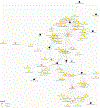Therapeutic ultrasound transducer technology and monitoring techniques: a review with clinical examples
- PMID: 39134055
- PMCID: PMC11375802
- DOI: 10.1080/02656736.2024.2389288
Therapeutic ultrasound transducer technology and monitoring techniques: a review with clinical examples
Abstract
The exponential growth of therapeutic ultrasound applications demonstrates the power of the technology to leverage the combinations of transducer technology and treatment monitoring techniques to effectively control the preferred bioeffect to elicit the desired clinical effect.Objective: This review provides an overview of the most commonly used bioeffects in therapeutic ultrasound and describes existing transducer technologies and monitoring techniques to ensure treatment safety and efficacy.Methods and materials: Literature reviews were conducted to identify key choices that essential in terms of transducer design, treatment parameters and procedure monitoring for therapeutic ultrasound applications. Effective combinations of these options are illustrated through descriptions of several clinical indications, including uterine fibroids, prostate disease, liver cancer, and brain cancer, that have been successful in leveraging therapeutic ultrasound to provide effective patient treatments.Results: Despite technological constraints, there are multiple ways to achieve a desired bioeffect with therapeutic ultrasound in a target tissue. Visualizations of the interplay of monitoring modality, bioeffect, and applied acoustic parameters are presented that demonstrate the interconnectedness of the field of therapeutic ultrasound. While the clinical indications explored in this review are at different points in the clinical evaluation path, based on the ever expanding research being conducted in preclinical realms, it is clear that additional clinical applications of therapeutic ultrasound that utilize a myriad of bioeffects will continue to grow and improve in the coming years.Conclusions: Therapeutic ultrasound will continue to improve in the next decades as the combination of transducer technology and treatment monitoring techniques will continue to evolve and be translated in clinical settings, leading to more personalized and efficient therapeutic ultrasound mediated therapies.
Keywords: Focused ultrasound; high-intensity focused ultrasound; therapeutic ultrasound; ultrasound monitoring; ultrasound transducer.
Figures
Similar articles
-
The Black Book of Psychotropic Dosing and Monitoring.Psychopharmacol Bull. 2024 Jul 8;54(3):8-59. Psychopharmacol Bull. 2024. PMID: 38993656 Free PMC article. Review.
-
Management of urinary stones by experts in stone disease (ESD 2025).Arch Ital Urol Androl. 2025 Jun 30;97(2):14085. doi: 10.4081/aiua.2025.14085. Epub 2025 Jun 30. Arch Ital Urol Androl. 2025. PMID: 40583613 Review.
-
A rapid and systematic review of the clinical effectiveness and cost-effectiveness of paclitaxel, docetaxel, gemcitabine and vinorelbine in non-small-cell lung cancer.Health Technol Assess. 2001;5(32):1-195. doi: 10.3310/hta5320. Health Technol Assess. 2001. PMID: 12065068
-
Electrotherapy modalities for rotator cuff disease.Cochrane Database Syst Rev. 2016 Jun 10;2016(6):CD012225. doi: 10.1002/14651858.CD012225. Cochrane Database Syst Rev. 2016. PMID: 27283591 Free PMC article.
-
Cost-effectiveness of using prognostic information to select women with breast cancer for adjuvant systemic therapy.Health Technol Assess. 2006 Sep;10(34):iii-iv, ix-xi, 1-204. doi: 10.3310/hta10340. Health Technol Assess. 2006. PMID: 16959170
Cited by
-
An adaptive deep learning approach based on InBNFus and CNNDen-GRU networks for breast cancer and maternal fetal classification using ultrasound images.Sci Rep. 2025 Jul 1;15(1):22027. doi: 10.1038/s41598-025-03402-z. Sci Rep. 2025. PMID: 40593964 Free PMC article.
-
Case of reactive arthritis in the knees resulting from COVID-19 infection alleviated by a deep muscle stimulator technique.IDCases. 2025 Jul 28;41:e02334. doi: 10.1016/j.idcr.2025.e02334. eCollection 2025. IDCases. 2025. PMID: 40786645 Free PMC article.
-
Identifying new therapeutics for focused ultrasound-enhanced drug delivery in the management of glioblastoma.Front Oncol. 2025 Mar 13;15:1507940. doi: 10.3389/fonc.2025.1507940. eCollection 2025. Front Oncol. 2025. PMID: 40182047 Free PMC article. Review.
References
-
- Song CW, Rhee JG, Levitt SH. Blood flow in normal tissues and tumors during hyperthermia. J Natl Cancer Inst. 1980;64:119–124. - PubMed
-
- Song CW, Park H, Griffin RJ. Improvement of tumor oxygenation by mild hyperthermia. Radiat Res. 2001;155:515–528. - PubMed
-
- Overgaard J Influence of extracellular pH on the viability and morphology of tumor cells exposed to hyperthermia. J Natl Cancer Inst. 1976;56:1243–1250. - PubMed
Publication types
MeSH terms
Grants and funding
LinkOut - more resources
Full Text Sources
Other Literature Sources


